As a gardener, let’s delve into the world of cabbage, a versatile and nutritious vegetable that has been cultivated for centuries. Cabbage belongs to the Brassica oleracea species and the Brassicaceae family, commonly known as the mustard family. With its dense, leafy head and crisp texture, cabbage is a staple in many cuisines around the world, prized for its versatility and health benefits. From crunchy coleslaws to hearty soups and stews, cabbage offers endless possibilities in the kitchen.
Whether you grow it in your backyard garden or admire it at the market, cabbage is a fascinating and rewarding addition to any culinary or gardening adventure. Let’s explore the wonders of cabbage together!
What is Cabbage?
Cabbage is a leafy vegetable belonging to the Brassica oleracea species and the Brassicaceae family, which also includes broccoli, cauliflower, and kale. It is characterized by its dense, round, or oval-shaped head of tightly packed leaves, which range in color from green to purple and white. Cabbage is known for its crisp texture and mild flavor, making it a versatile ingredient in various culinary dishes worldwide.
Cabbage offers a range of culinary options, whether enjoyed raw in salads, coleslaws, and sandwiches or cooked in soups, stir-fries, and casseroles. Its versatility extends to its nutritional profile, boasting low calorie and carbohydrate content yet rich in dietary fiber, vitamins C and K, and antioxidants. This non-starchy vegetable has been cultivated for nearly 4,000 years, showcasing its enduring popularity and nutritional value. With its long history and diverse culinary applications, cabbage remains a timeless and nutritious choice for any diet.
It comes in three varieties: green, red, and savoy, each with its own flavor and texture. This versatility makes cabbage a versatile element in a variety of culinary traditions. From ancient diets to current cuisines, cabbage is a major ingredient in meals around the world, celebrated for its health benefits and adaptability to various recipes.
History and Origin of Cabbage:
Cabbage has a long and rich history dating back thousands of years. It is believed to have originated in the Mediterranean region, where it was cultivated by ancient civilizations such as the Greeks and Romans. The exact origins of cabbage are difficult to pinpoint, but archaeological evidence suggests that it has been cultivated since at least 4,000 BCE.
Over time, cabbage spread across Europe and Asia, becoming a staple food in many cultures. It was valued for its hardiness, long storage life, and nutritional properties, making it an important food source, especially during harsh winters.
In ancient times, cabbage was also prized for its medicinal properties. It was used to treat various ailments and was believed to have healing properties for digestion, inflammation, and even headaches.
Cabbage continued to be cultivated and consumed throughout the Middle Ages and into the Renaissance period. It gained further popularity during the Age of Exploration, as European explorers introduced it to new regions around the world.
Today, cabbage remains a widely cultivated vegetable, grown in diverse climates and enjoyed in countless culinary dishes worldwide. Its long and storied history reflects its enduring popularity and importance in global cuisine.
Types of Cabbage:
Cabbage comes in several varieties, each with its own unique characteristics and culinary uses. Some common types of cabbage include:
- Green Cabbage: This is the most widely available and commonly consumed type of cabbage. It has a round or oval-shaped head with smooth, pale green leaves and a mild flavor. Green cabbage is versatile and can be used in a variety of dishes, both raw and cooked.
- Red Cabbage: Red cabbage has a deep purple color and a slightly peppery flavor. It adds vibrant color and crunch to salads and coleslaws and can also be cooked in dishes such as braises and stir-fries.
- Savoy Cabbage: Savoy cabbage has dark green, crinkled or wrinkled leaves. Its mild, sweet flavor and tender texture make it ideal for salads, wraps, and stuffing.
- Napa Cabbage: Also known as Chinese cabbage, Napa cabbage has elongated, cylindrical heads with pale green leaves. Its mild, slightly sweet flavor makes it commonly used in Asian cuisine, particularly in stir-fries, soups, and kimchi.
- Bok Choy: Bok choy, or pak choi, is a type of Chinese cabbage with thick, crunchy stems and dark green leaves. It has a mild, slightly peppery taste and is often used in stir-fries, soups, and salads.
These are just a few examples of the many types of cabbage available. Each variety has its own flavor profile and texture, allowing for a wide range of culinary possibilities.
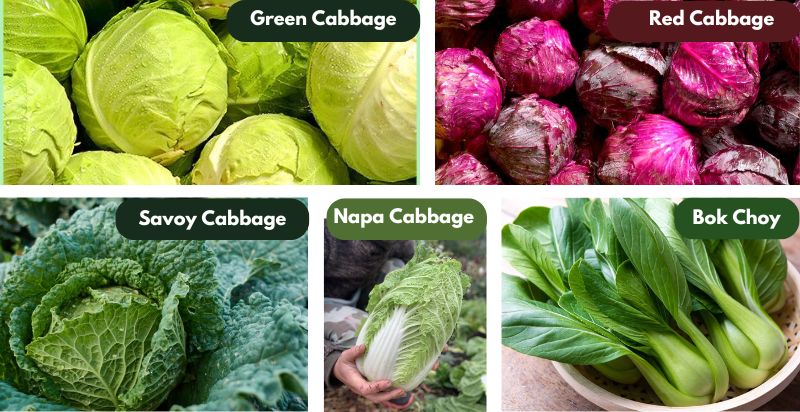
Nutritional Facts of Cabbage:
One cup (89 grams) of raw cabbage provides approximately:
- Calories: 22
- Protein: 1 gram
- Carbohydrates: 5 grams
- Dietary Fiber: 2 grams
- Sugars: 2 grams
- Fat: 0 grams
- Vitamin C: 28% of the Daily Value (DV)
- Vitamin K: 61% of the DV
- Folate: 6% of the DV
- Vitamin B6: 4% of the DV
- Potassium: 5% of the DV
- Manganese: 5% of the DV
These values are approximate and may vary slightly depending on the specific variety and freshness of the cabbage.
Health Benefits of Eating Cabbage:
Cabbage offers a multitude of health benefits due to its rich nutritional composition and unique bioactive compounds. High in fiber, cabbage supports digestive health by promoting regular bowel movements and fostering a healthy gut microbiome. Its wealth of vitamin C strengthens the immune system, aiding in the body’s defense against infections and illnesses.
Additionally, cabbage contains anthocyanins and sulfur compounds, which have been linked to lower levels of LDL cholesterol and reduced risk of heart disease. Its abundance of vitamin K supports bone health by aiding in bone mineralization and reducing the risk of osteoporosis.
Cabbage also contains glucosinolates, compounds that may help inhibit the growth of cancer cells and lower the risk of certain cancers. With its low calorie and carbohydrate content, cabbage can aid in weight management by promoting satiety and reducing overall calorie intake.
Incorporating cabbage into a balanced diet can provide a wide range of health benefits, making it a valuable addition to any meal plan.
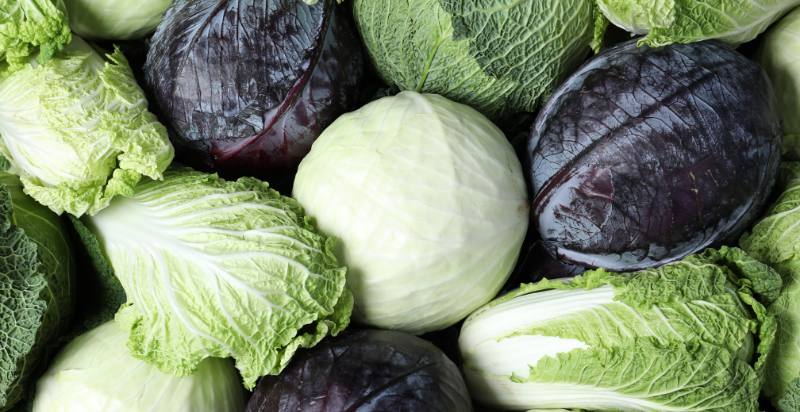
Cultivation of Cabbage:
Once you have chosen a suitable spot for planting cabbage, the next step is to prepare the soil. Cabbage prefers well-drained, fertile soil with plenty of organic matter, with a pH level between 6 and 7. Before planting, mix a 2-3 inch layer of compost or aged manure into your soil. This will help provide essential nutrients and improve drainage.
There are two main methods for planting cabbage: direct seeding and transplanting seedlings. Direct seeding means sowing seeds directly into the ground; this method works best for early season or spring crops, as it’s easier to get a head start before the summer heat arrives. Transplanting seedlings involves purchasing starter plants from a nursery and transplanting them into the garden; this method is best for late-season or fall crops, as it gives plants more time to establish themselves in the ground.
When planting cabbage, place each plant about 18 inches apart in rows 24-36 inches. If direct seeding is used, sow 1/2 inch deep and thin seedlings 12-15 inches apart. Keep the soil moist during germination and continue to water regularly throughout the growing season.
Finally, add a layer of mulch around your plants to help retain moisture, control weeds, and reduce soil erosion. As your cabbage matures and heads begin to form, gently twist off any loose leaves at the base of the plant to ensure proper nutrient uptake.
Although cabbage is a hardy crop, it’s important to watch out for pests such as aphids and cabbage worms. Regularly check your plants for signs of infestation, and if necessary, use an organic insecticidal soap or neem oil.
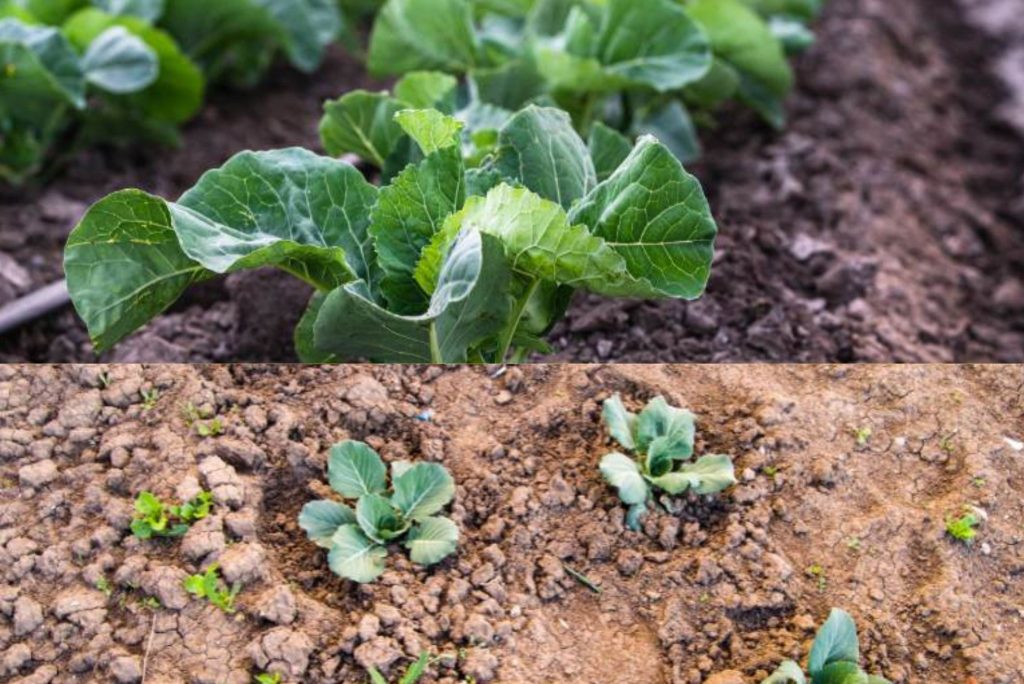
How to Harvest Cabbage?
Harvesting cabbage requires attention to detail to ensure the best quality and yield. When cabbage heads feel firm and solid to the touch, usually 60-100 days after planting, they are ready for harvest. To harvest, use a sharp knife or garden shears to cut the cabbage heads from the stem, leaving a few outer leaves attached to protect them during storage. It’s best to harvest in the morning when temperatures are cooler to prevent wilting.
Carefully cut through the stem just above ground level, avoiding damage to the surrounding leaves or neighboring plants. Handle harvested cabbage heads gently to avoid bruising or damage, and store them in a cool, dark place with good air circulation, such as a root cellar or refrigerator. Proper storage helps maintain the cabbage’s quality and freshness until it is ready for use.
With these tips, growing cabbage is easy and rewarding. With a little effort, you can enjoy fresh heads of this nutritious vegetable right from your garden. And no matter what your favorite way to eat it is, with steamed greens or in coleslaw, you’ll be sure to appreciate the flavor of freshly harvested cabbage!
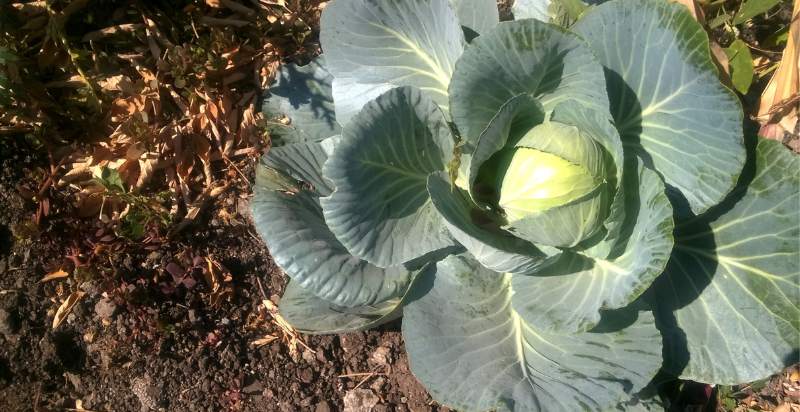
What are Some Ways to Use cabbage?
Cabbage is a versatile vegetable that can be used in a variety of culinary preparations. Here are some common ways to use cabbage:
- Raw: Cabbage adds crunch and texture to salads and slaws. Shredded cabbage can be mixed with other vegetables, fruits, and dressings for a refreshing and nutritious salad.
- Cooked: Cabbage can be sautéed, stir-fried, boiled, or steamed. It can be added to soups, stews, stir-fries, and casseroles for extra flavor and nutrition.
- Fermented: Cabbage is the main ingredient in sauerkraut and kimchi, two popular fermented foods. Fermentation enhances the flavor and nutritional value of cabbage while also providing beneficial probiotics.
- Stuffed: Cabbage leaves can be stuffed with a variety of fillings, such as meat, rice, vegetables, and spices. Stuffed cabbage rolls are a hearty and satisfying dish enjoyed in many cuisines around the world.
- Pickled: Cabbage can be pickled with vinegar, salt, and spices to create tangy and flavorful pickled cabbage, also known as curtido or pickled cabbage slaw.
- Wraps: Large cabbage leaves can be used as a substitute for tortillas or bread to wrap around fillings like grilled vegetables, tofu, or meat for a low-carb and gluten-free alternative.
These are just a few examples of the many ways cabbage can be used in cooking. Its versatility and mild flavor make it a popular and nutritious ingredient in a wide range of dishes.
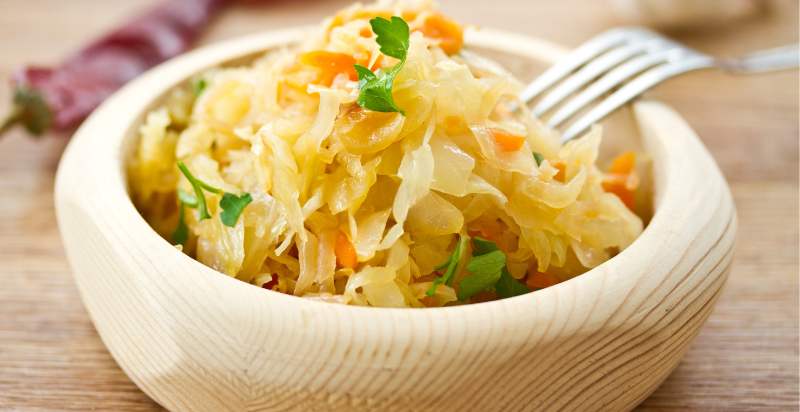
Potential Risks from Cabbage:
While cabbage is incredibly nutritious and delicious, some potential risks are associated with it. For instance, raw cabbage can contain harmful bacteria such as E. coli or salmonella that can cause food poisoning if not cooked properly.
To avoid this risk, thoroughly wash all cabbages before cutting them and cook them until they’re fully done before consuming. In addition, some people may experience digestive issues after eating large amounts of cabbage due to its high fiber content. Consult your physician before adding cabbage to your diet if you have any gastrointestinal conditions such as irritable bowel syndrome or Crohn’s disease.
Cabbage contains compounds called goitrogens, which can interfere with thyroid function when consumed in large amounts. These compounds may inhibit the uptake of iodine, leading to thyroid enlargement (goiter) or exacerbating thyroid conditions like hypothyroidism.
It belongs to the cruciferous vegetable family, which can cause gas and bloating in some individuals due to its high fiber and raffinose content. Eating large amounts of cabbage raw or consuming it too quickly may exacerbate these symptoms, particularly in people with sensitive digestive systems.
While there are a few potential risks associated with eating cabbage, it’s a nutritious and delicious vegetable that can be enjoyed in many different ways. With proper care and preparation, you can reap all the benefits of this versatile veggie without experiencing any negative side effects.
Conclusion:
Cabbage is a versatile and nutritious vegetable that offers a wide array of culinary possibilities. Whether you’re steaming it as a side dish or incorporating it into salads or slaws, its culinary potential knows no bounds. Cultivating cabbage in your garden is a straightforward and gratifying endeavor. However, to ensure safety and maximize its benefits, it’s crucial to wash it thoroughly before preparation and cook it adequately to mitigate risks like foodborne illness or digestive discomfort.
By following these guidelines, you can confidently savor cabbage’s benefits. Incorporate cabbage into your diet today to experience its rich nutritional profile and diverse culinary appeal!
FAQ:
Can I eat raw cabbage?
Yes, cabbage can be enjoyed raw in salads, slaws, and sandwiches. However, some people may find raw cabbage difficult to digest, so it’s essential to listen to your body and adjust your consumption accordingly.
How can I prevent cabbage from causing gas?
Cooking cabbage thoroughly can help reduce its gas-producing properties. Additionally, gradually increasing your intake of cabbage over time may help your digestive system adjust more comfortably.
What is the best month to plant cabbage?
You can sow cabbage seeds outdoors from late winter to late summer – timings depend on the type of cabbage:
- Late February–early May for summer cabbages (protect early sowings with cloches or fleece)
- April–May for autumn and winter cabbages.
- July–August for spring cabbages.
What is the best fertilizer for cabbages?
A diluted solution of a balanced (10-10-10) liquid fertilizer, weak compost tea, or fish emulsion is recommended. This can be repeated every two weeks. Once cabbage plants have been transplanted into a prepared garden bed, continue applying cabbage fertilizer every three to four weeks until heads begin to form.
Where does cabbage grow best?
Sunny locations.
Cabbage is a cool-season vegetable that prefers sunny locations and fertile, well-drained soil. Incorporate some organic matter and a complete fertilizer into the area before planting. Plant seeds ¼-½ inch deep, 2-3 weeks before the last frost in the spring.
- Everything You Wanted to Know About Red Tamarillos - June 2, 2025
- A Guide to Tulips: Everything You Need to Know & More… - June 2, 2025
- Guanabana: Description, Flavor, Benefits, And Uses - May 27, 2025

17 thoughts on “What is Cabbage? How to Plant, Grow, and Harvest Cabbage”
Comments are closed.